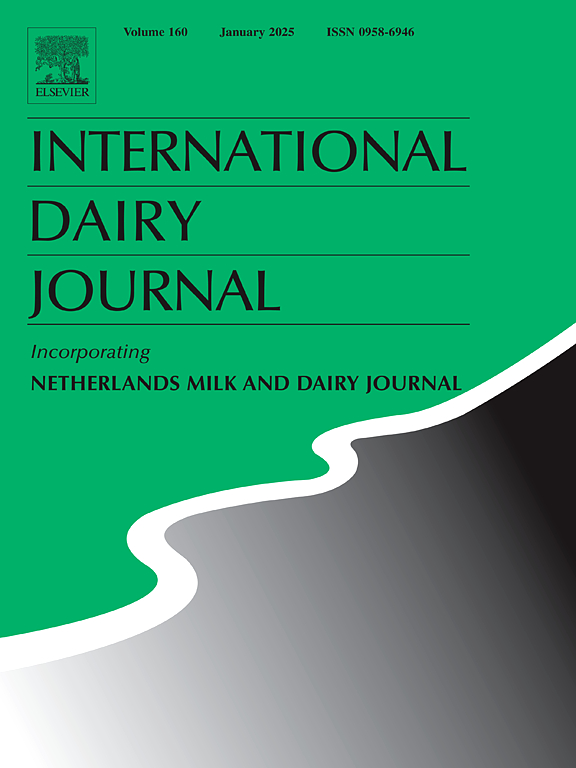Investigation of various AprX endopeptidases in milk: heat stability, substrate selectivity and a novel sample preparation method for subsequent detection
IF 3.4
3区 农林科学
Q2 FOOD SCIENCE & TECHNOLOGY
引用次数: 0
Abstract
AprX, metallopeptidases secreted by Pseudomonas spp. in milk, are described for their heat stability, especially during UHT treatments. Thus, they are described for their involvement in protein destabilization of shelf-stable milk products. Results showed temperature inactivation at 55 °C enhanced inactivation of most AprX compared to other temperatures. Further, AprX's half-life at 55 °C was 7.7–14.4 min. Substrate selectivity from eight Pseudomonas AprX was investigated using para-nitroaniline-substrates. The preference for Arg or Ala at P1-position at the cleavage site was linked to the AprX sequence identity. Shelf-life experiments at 20 °C determined a critical endopeptidase activity threshold of 0.1 pkat mL−1 correlated with the protein destabilization for three months. Detection of such low endopeptidase activities requires a sample preparation and concentration method, which was developed. The two-step preparation method removed milk proteins and concentrated AprX 10-fold allowing a 60 ± 0.3 % recovery and precise quantification (coefficient of variation: 8.51 %).
牛奶中各种AprX内肽酶的研究:热稳定性,底物选择性和一种新的样品制备方法,用于后续检测
AprX是由假单胞菌在牛奶中分泌的金属肽酶,具有热稳定性,特别是在UHT处理期间。因此,它们被描述为它们在货架稳定的乳制品的蛋白质不稳定的参与。结果表明,与其他温度相比,55℃的温度失活增强了大多数AprX的失活。此外,AprX在55°C下的半衰期为7.7-14.4 min。利用对硝基苯胺底物研究了8种假单胞菌AprX的底物选择性。切割位点p1位置的精氨酸或亚拉氨酸的偏好与AprX序列的同一性有关。20°C下的保质期实验确定了关键的内多肽酶活性阈值为0.1 pkat mL−1,与三个月的蛋白质不稳定性相关。检测如此低的内肽酶活性需要一种样品制备和浓缩方法。两步制备法去除乳蛋白,将AprX浓缩10倍,回收率为60±0.3%,定量精确(变异系数为8.51%)。
本文章由计算机程序翻译,如有差异,请以英文原文为准。
求助全文
约1分钟内获得全文
求助全文
来源期刊

International Dairy Journal
工程技术-食品科技
CiteScore
6.50
自引率
9.70%
发文量
200
审稿时长
49 days
期刊介绍:
The International Dairy Journal publishes significant advancements in dairy science and technology in the form of research articles and critical reviews that are of relevance to the broader international dairy community. Within this scope, research on the science and technology of milk and dairy products and the nutritional and health aspects of dairy foods are included; the journal pays particular attention to applied research and its interface with the dairy industry.
The journal''s coverage includes the following, where directly applicable to dairy science and technology:
• Chemistry and physico-chemical properties of milk constituents
• Microbiology, food safety, enzymology, biotechnology
• Processing and engineering
• Emulsion science, food structure, and texture
• Raw material quality and effect on relevant products
• Flavour and off-flavour development
• Technological functionality and applications of dairy ingredients
• Sensory and consumer sciences
• Nutrition and substantiation of human health implications of milk components or dairy products
International Dairy Journal does not publish papers related to milk production, animal health and other aspects of on-farm milk production unless there is a clear relationship to dairy technology, human health or final product quality.
 求助内容:
求助内容: 应助结果提醒方式:
应助结果提醒方式:


